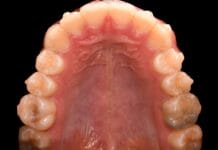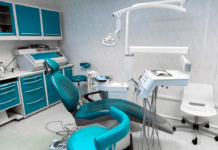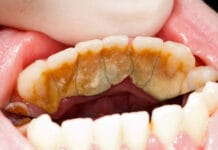Have you ever put a patient back in the chair, and they blurt out, “I really hate going to the dentist?” Well, it’s a good thing that this hygienist is not a dentist, eh?
We all have our own forms of anxiety. If you have ever entered a dental office, which I assume you have, you are aware of dental anxiety. You may have had dental anxiety as a child or have witnessed your patients experiencing it.
Patients can experience dental anxiety very differently. Some will be very quiet, shy, and be standoffish. At times, this could come off as being angry, upset, or negative, which can make the appointment awkward. Others will be more talkative or constantly moving (antsy). Sometimes you can’t even tell what mood is being encountered while other patients will openly verbalize their anxieties to you.
I have treated patients with mild to extreme dental anxiety. I define extreme cases as being where it is a struggle throughout the entire appointment (if there is an appointment at all). You probably have had your fair share of those experiences yourself.
Ideas for Curtailing Anxiety
Most of the time, you can talk your way through it, and most of the time, it works out successfully. Here are some ideas for reducing dental anxiety during an appointment:
- Talk. Have a conversation. Once you have addressed where a patients’ anxiety is stemming from and addressing it, this can distract the patient from focusing on their fears.
- Show-tell-do. Describing what each step is prior to taking action is a great way to take away misconceptions or confusion. If the patient understands what you are doing during the appointment and why, then they may feel better. In general, people are less stressed when they have knowledge or know what is coming, rather than something being sprung upon them.
- Play calming music. There are plenty of calming and spa music stations and playlists on many music-playing platforms.
- Diffuser. Many people enjoy the health benefits of essential oils. I enjoy it for simply the nice smells. I try to make my operatory as spa-like as possible. Do be cautious of patients with allergies and/or sensitivities when diffusing essential oils.
- Silence. Peace and quiet. Some patients may enjoy just being quiet, which may be their way to staying calm. Try not to take this personally.
- Early doctor exam. Have the doctor exam earlier in the appointment. Some patients get very anxious when they know the doctor is eventually coming in. They could be afraid of what he/she will say and diagnose. In certain situations, this cannot really occur, but an example could be an existing patient who “just doesn’t like the dentist” and has the exam completed after radiographs were taken, prior to the prophy.
Fearlessness Starts with Youth
One huge step dental professionals can improve upon is making the appointment a pleasant experience while the patients are young. Taking the fear out early can help avoid anxious feelings in dental settings in the future. Many children just don’t understand what is happening and why their parents are bringing them to the appointment.
The show-tell-do method is a lifesaver. Having the child see what is happening first makes them less worried. Be also aware of the different types of noises in and around your operatory. Is the suction a little noisy? Or is your slow-speed handpiece scary looking? That handpiece, “a special toothbrush,” can be introduced by polishing the child’s fingernail showing how it just tickles.
Having the child touch, hold, and feel certain (safe) objects can also contribute to a successful appointment. Another way is doing a practice run. The child can watch a family member, such as a sibling go through a dental hygiene appointment first. Another way to practice is preparing the child in advance. Have the child come in a few minutes early to get more comfortable in the chair.
Another example is, if a child is due for radiographs, “practicing” by placing your finger or the sensor in and out to “train” the child’s tongue where the sensor would be. Lastly, I have found talking to the child about things they enjoy is a great way to distract them and make the appointment very successful.
No matter their age, patients have dental anxiety. It’s a fear, a phobia. It is also a great idea to encourage and praise patients for making the appointment, showing up, which is the great first step.
Treating patients with a more severe dental anxiety may cause the need to take the appointment nice and slow, so you don’t overwhelm them. I’ve seen adult patients bring in family members into the operatory. They may need some extra TLC. The patient may or may not disclose why they hate going to the dentist. Whatever the case, I discovered that you must figure out what is the patient’s mindset.
Some things to consider when determining a patient’s mindset are:
- Did they make the appointment, or did someone else?
- Why are they here? Are they in pain? Some extreme dental anxiety patients are so afraid they may not come in until the pain is unbearable.
- What is the past dental history and experiences?
- Are they a new patient or a recall patient? If they are new, have they recently seen a previous dentist? If they are a recall, have they known to cancel or miss appointments?
- How is the patient presenting themselves? What are they saying? What I mean by this is, are they speaking negatively? Are they speaking poorly about themselves or their oral condition?
- Is there an underlying issue?
Dental professionals get a feel about people, and we follow our instincts. Caring for patients with all forms of dental anxiety may be a challenge at times, but if both sides continue to collaborate, each dental visit can be a successful one.











